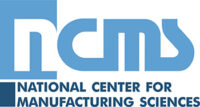The term “valley of death” is used throughout the business world to describe the difficulty of developing, demonstrating, and scaling promising new inventions into sustained use. The term is ubiquitous because only a tiny percentage makes the journey. Many have tried, but most have failed.
In the summer of 2022, two NCMS interns, Katie Wells and Braden Crimmins, worked on cracking the code of technology transition through an internship program run by the University of Michigan’s Tauber Institute for Global Operations.
Their research focused on two main questions. How do industry, academia, and government technologists bridge the “valley of death”? And what separates the technologies that fail from those that succeed? Their goal was to identify common criteria and to build a model that predicts which technologies are most likely to successfully transition. While this work was done primarily in the Department of Defense (DOD) technology space, the research could be applicable and adaptable in the private sector.
“I’ve always been interested in technology innovation,” said Crimmins who is working on a master’s degree in computer science. “Since I’ve been an undergraduate, I’ve researched various technologies that I believe will make the world a better place. This internship focused on how to make technologies like those a reality, and I knew it would give me some valuable insights.”
Wells, who is completing an MBA, said, “I wanted to work for NCMS because I was looking for operations and process experience. I have a background in HR and the NCMS project enabled me to look at processes solving for success. I was able to take the work I’ve done in my former HR career and bring it into the technology sector.”
Throughout the summer, Wells and Crimmins gathered input from industry, DOD, and academic leaders who are active in the technology transition space. They interviewed individuals, conducted surveys, attended technology conferences, and completed facility tours to gain as many perspectives and insights as possible.
After completing interviews and surveys—from across government, industry, academia, and NCMS—the team compiled their data and made some key findings. Among them were the following:
- There are many different perspectives on what constitutes a successful technology transition. Oftentimes one of the roadblocks to technology transition is that the DOD, OEMs, start-ups, and academia have different definitions of what is required for success. After interviews elicited a wide range of answers, the interns asked survey respondents to choose among four main definitions: a prototype has been created; a finished product has been piloted or demonstrated; a product has been integrated into a local facility; or a product has been adopted enterprise-wide. Among those choices, a plurality defined technology transition as “local integration of a new tool.”
- Successful transitions require different factors, depending on the type of technology. For example, software transitions require different considerations than hardware. Regardless, one common theme emerged among interviewees and two-thirds of survey respondents: transition partnerships should be initiated when the technology has reached a specific range in technology readiness levels (TRL)—typically TRL 3 to 6.
- Adopter need was identified as the most important factor for technology transition success—i.e., there must be “user pull,” rather than “technology push.” However, high-level stakeholder buy-in is also critical for gaining momentum throughout organizations in support of transition.
- Most new technologies that offer major benefits also involve major disruption. On a spectrum between 1 and 100, where 1 means a technology with very little change or benefit and 100 means large benefits but substantial difficulties involved, a small range was expected to be identified for optimal technology transition. Instead, responses were clustered around two different marks, at 25 and 75. This means some respondents tend to think it’s easier to make incremental changes with small benefits, while others tend to think major improvements are worth the difficulties that come with them.
Based on their research, the team built an adaptable model that systematizes seven key dimensions of preparedness required for successful technology transitions. The interns found two things about this model to be surprising: that technology maturity is only one dimension, and that not all factors will apply the same way for each transition.
The team pressure-tested their model with various vendors and confirmed that they captured the key attributes of the process. Additionally, they built the model generically enough so that it can be adjusted to meet the specific needs of the vendor, adopter, and transitioning technology. This work advances NCMS’s mission to develop, demonstrate, and transition innovative technologies efficiently, with less risk and lower cost.
“A concerted effort is underway within the defense enterprise to bridge the ‘valley of death,’” said Christopher Fick, Strategic Communications Project Manager at NCMS, who led the effort. “Understanding the issues from all perspectives and eliminating the roadblocks significantly impacts warfighter readiness. This work is vital for NCMS. The result of this research will enable NCMS to increase the value we deliver to our members, partners, and customers.”
The team will present findings from their research at the SPOTLIGHT! Team Project Showcase and Scholarship Competition on Friday, September 16 from 8:00 am – 4:00 pm at the Sheraton Ann Arbor Hotel. For more information and to register, please visit: https://www.bus.umich.edu/Conferences/Spotlight-2022/Default.aspx.




